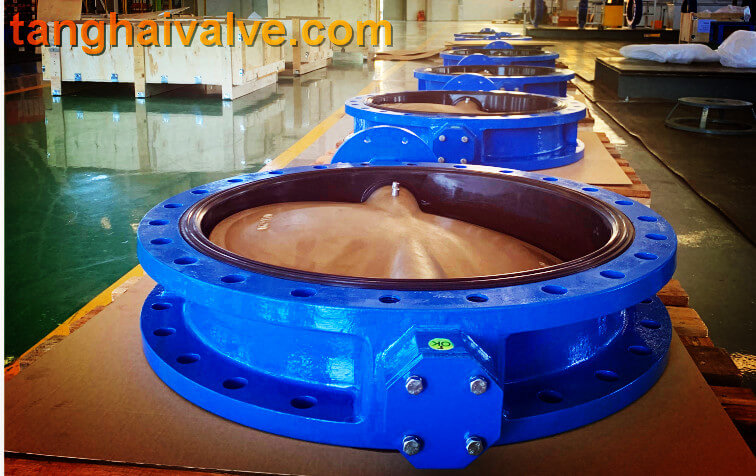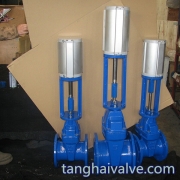Correct installation of flanged butterfly valve can effectively prevent leakage
Butterfly valve has the advantages of good flow adjustment function and good closing and sealing characteristics, so it has become one of the fastest-growing valve varieties in the past ten years. It has simple and compact structure, light weight, convenient operation, reliable performance, complete functions, beautiful appearance, easy

Double flange butterfly valve (16)
maintenance, and is very popular with customers. In actual working conditions, if you want the flanged butterfly valve to achieve effective leakage prevention, the correct installation method is very important. Today, the editor of Tanghai Valve will share with you the installation precautions of the flange butterfly valve, as follows:
1. Before installation, you must carefully check whether the valve’s logo and certificate meet the requirements for use, such as Tanghai D342X flange rubber-sealed butterfly valve, to see whether the product brand, model, etc. are consistent with the valve required for the pipeline, and clean it after verification. Here is also the storage problem of flanged butterfly valves: the butterfly valves that have not been installed and used for the time being must be stored in a dry room; the butterfly valves that have been stored for a long time should be cleaned regularly, blown dry, and coated with anti-rust oil. The flange sealing surface should be protected by a blind plate.
2. Install according to the medium and its flow direction. For example, if you use water, you need to use ethylene-propylene rubber gaskets. When tightening the bolts, use the symmetrical or star-shaped torque method; if you use corrosive media, use PTFE gaskets. When tightening the bolts, use Torque on symmetrical or star-shaped method;
3. When installing the connecting bolts of the flange butterfly valve and the pipeline, do not tighten a single piece at one time, and should tighten it in diagonally opposite directions multiple times to prevent the uneven force from leaking at the flange connection.
4. When installing the butterfly valve, keep the butterfly plate in the closed position to prevent debris from entering the worn sealing surface. When the user is testing pressure, the pressure can be tested only after the two ends are installed with flange pairs.
5. When the valve is connected to the pipeline, flanges of appropriate specifications should be selected to ensure an effective sealing surface.
6. Before the electric flange butterfly valve is connected to the power supply for the first time, it needs to be manually adjusted to 1/3 of the closed position, and check whether the direction of the indicator plate is consistent with the opening direction of the valve.
7. When the flange butterfly valve is in use, if any malfunction is found, it should be stopped immediately.
Master the above correct installation method, flange butterfly valve will be more confidential and durable in application. If you are in need of purchasing high-quality flanged butterfly valves, Tanghai will be your best choice. The sealing surface of Tanghai flange butterfly valve has high processing precision, small opening friction and easy closing. Not only the self-sealing performance and the sealing performance are stable, but it also has the characteristics of self-locking that becomes tighter and tighter. It is suitable for gas, steam, air, water and other media. You are welcome to inquire.
TH Valve is a professional manufacturer of butterfly valve, gate valve, check valve, globe valve, knife gate valve, ball valve with API, JIS, DIN standard, used in Oil, Gas, Marine industry, Water supply and drainage, fire fighting, shipbuilding, water treatment and other systems, with Nominal Diameter of DN50 to DN1200, NBR/EPDM/VITON, Certificates & Approvals: DNV-GL, Lloyds, DNV, BV, API, ABS, CCS. Standards: EN 593, API609, API6D
Related news/knowledge:
The correct operation method of manual valve
Wafer butterfly valve installation instructions and steps
What are the taboos when installing valves
Daily maintenance and precautions of ball valves

 tanghaivalve.com
tanghaivalve.com

 © Copyright 2020 Tianjin Tanghaidongyang Valve Co., Ltd. All Rights Reserved.
© Copyright 2020 Tianjin Tanghaidongyang Valve Co., Ltd. All Rights Reserved.